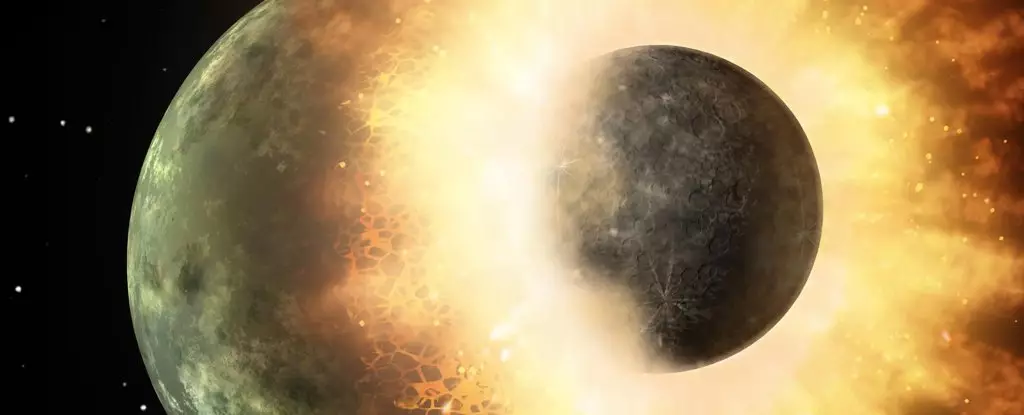The debate surrounding the origins of the Moon has been ongoing for years, with various theories proposed and discarded over time. However, a recent study suggests some intriguing nuances to the widely accepted model. According to the current consensus, the Moon formed approximately 4.5 billion years ago following a massive collision between the early Earth and a Mars-sized protoplanet named Theia. The impact resulted in debris being thrown into orbit around Earth, eventually coalescing to create the Moon. While there is substantial evidence supporting this theory, recent research has shed new light on the dynamics of the material ejected from the impact.
Immediately after its formation, the Moon orbited Earth at a distance roughly 5% of its current value, gradually drifting away due to tidal effects. The lunar surface was initially covered in molten magma, which cooled and solidified over time to form the familiar crust, mantle, and core. The Moon’s surface features, including impact basins, craters, and volcanic activity leading to the formation of lunar maria, bear witness to a history of heavy bombardment and geological transformations. The orbit of the Moon has since settled into a slightly elliptical path, with an eccentricity of 0.0549, ranging from 364,397 km to 406,731 km from Earth.
In the early stages of the Earth-Moon system, the stability of particles in the accreting Moon was subject to varying orbital paths and nodal precession. Nodal precession, describing the gradual movement of orbital intersections, plays a crucial role in understanding the evolving orbits in celestial bodies. The study by Stephen Lepp and his team from the University of Nevada highlighted the importance of polar orbits in maintaining stability within the Earth-Moon system. As the distance between Earth and the Moon increased over time, the region where polar orbits could exist decreased, ultimately leading to the absence of stable polar orbits in the current Earth-Moon system.
The presence of polar orbiting material has significant implications for the eccentricity growth of binary systems such as the Earth and the Moon. Should a substantial amount of material enter a polar orbit, it could drive an increase in the eccentricity of the Earth-Moon system. This finding challenges previous assumptions about the stability and evolution of orbital paths within celestial bodies, providing a fresh perspective on the dynamics of planetary formation and interactions.
The evolving orbit of the Moon offers a fascinating glimpse into the complex history of the Earth-Moon system. By reevaluating the dynamics of material ejected from the Moon’s formation and the role of polar orbits in maintaining stability, scientists are uncovering new insights into the origins and evolution of our celestial companion. As technology advances and new discoveries are made, our understanding of the Moon’s orbit and its impact on Earth’s dynamics will continue to evolve, shaping our knowledge of the cosmos.


Leave a Reply